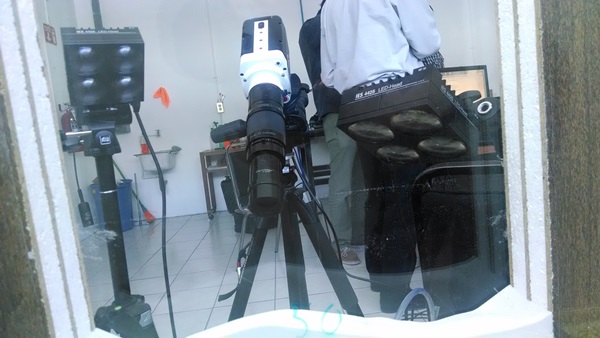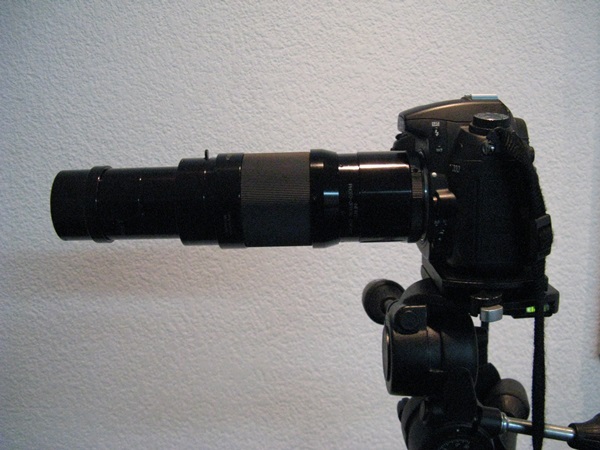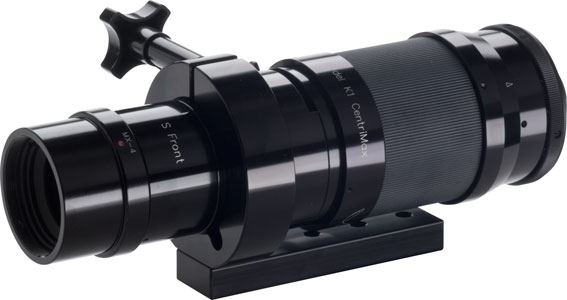
Model K1 CentriMax™
K-Series Long-Distance CentriTel® Video Microscope
- CentriTel® Internal Focusing System for Constant Magnification
- Focuses from 3 METERS to 60mm with MX-Series Objectives
- Adapts to C or T-mount Cameras
- Large Format Capability to 4/3-in. sensors
- Accessories enable use up to 35mm (24mmx36mm) sensors
- Can be equipped with infinity-corrected microscope objectives—to the theoretical limits of optical microscope resolution
- Coaxial In-line Illuminator (optional) for reflective objects
Model K1 CentriMax Long-Distance Video Microscope
Challenge: Design a Long-Distance Microscope with nearly the same resolution of Infinity's flagship Model K2 DistaMax, provide it with internal focusing that maintains constant magnification from any chosen working distance and impart the ability to make precise Z-depth measurements over many times the original depth of field.
Challenge met: Model K1 CentriMax—Infinity's premier CentriTel optic.
Now, the original CentriMax has been reconfigured mechanically with the same robust construction as our Model K2 DistaMax. It now joins the K2 DistaMax as a true K-Series Long-distance Microscope, earning the K1 designation. No longer just a C-mount optic, the K1 CentriMax can also be used with T2 (e.g., "F-mount") cameras as well—directly with formats up to 4/3-in. When larger formats are desired or when "flip-mirror" DSLRs are used, all that is required now, is to use a NTX 2x Amplifier at its rear.
Note: "Flip-mirror" DSLRs can not be used directly on the K1 CentriMax unless the NTX Tube is added because the rear construction does not allow this. In any case, DSLRs have large formats which require the use of the NTX Tube for proper functioning. No attempt should ever be made to attach the K1 CentriMax directly to a flip-mirror DSLR unless the NTX Tube is interfaced.
The K1 CentriMax can be actively focused anywhere from 3 METERS to 60mm by using supplemental MX-Series objectives. Once a working distance is chosen, its patented CentriTel® internal focusing system allows
focusing objects from top to bottom without magnification change.
Unlike its Model KX InfiniMax(tm) stablemate, the K1 CentriMax does not need physical movement to maintain magnification by a resetting of the focus. Rather, the CentriTel® internal focusing system inside each CentriMax maintains essential magnification as a constant during active focal translation. Depth details peel away, yet magnification remains essentially constant.
The Model K1 CentriMax is perfect for montaging and making measurements from a fixed position. The K1 CentriMax represents an entirely new approach to 3-D imaging and data collection. All this from a long-distance microscope that more than holds its own in terms of world-class resolution and stunning imagery.
As if this were not enough, the front of each K1 CentriMax can be supplemented by adapters for transmitted or coaxial in-line illumination — for use with Achrovid™, Mitutoyo, Edmund, Olympus or Nikon infinity-corrected objectives. The standard S-Front assembly of the K1 CentriMax can be removed and a special Z-Front can be put in its place. By using the Z-Front, Zeiss ICS objectives can be compatibly used as well. When infinity-corrected microscope objectives are used on CentriMax, the total system power is amplified (depending on the objective's make) by about a 2x factor. The correct position for focus is set at 180-degrees of the K1 CentriMax's 360-degree focus. That's all you need to do to set a microscope objective at its proper starting focus. Then, focus can be extended up or down—without external movement. You can put CentriMax on—even in—machines or assemblies. Now, you can fixture an imaging system and let it do the up and down focus—optically. A full line of accessories supports the capabilities of this revolutionary optic.
Whether manual or motor-driven, K1 CentriMax is perfect for montaging and making measurements from a fixed position. On K1 CentriMax, this represents an entirely new approach to 3-D imaging and data collection. When motorized and software driven K1 CentriMax can be used to make measurments and reconstructions heretofore impossible from a fixed-positioned optic.
All this from a long-distance microscope that holds its own in terms of resolution and stunning imagery. What more can we say? Take another look:
CentriTel and Format Size with the K1 CentriMax
CentriTel is based on a certain derivative of Abbe's Sine Condition. Simply, a microscope's field of view must have the same magnification throughout from center to edge. In CentriTel mode, the K1 CentriMax maintains magnification not only at one focal plane, but at all provided by the internal focusing system. This derivative of the Abbe Sign Condition can only be met up to a 2/3-in. format with MX-Series Objectives. This is absolutely no problem in terms of the image quality when large formats are used directly (e.g. F-mount cameras). The image will still be excellent. But the CentriTel feature will not hold with these formats when the K1 CentriMax is used directly with them. In order to maintain CentriTel function with large formats, an amplifier (such as the NTX Tube) must be used to restore the field that is in accordance with the Abbe Sine Condition.
Gallery





























